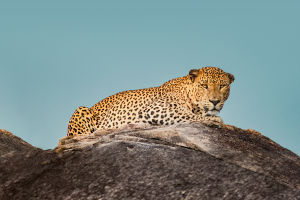The cheetah (Acinonyx jubatus) stands as one of the most remarkable animals in the world, recognized for its extraordinary speed and unique adaptations for life on the African savannah.
Known for their ability to accelerate from 0 to 60 mph in just a few seconds, cheetahs are the fastest land animals on Earth. Let’s dive into what makes cheetahs so incredible, from their physical traits to their hunting techniques and conservation status.
Physical Characteristics
Cheetahs are easily distinguishable by their slender bodies, small heads, and long legs, which contribute to their impressive speed and agility. Unlike other large cats, cheetahs have blunt claws that are only partially retractable, offering greater grip on the ground while sprinting. This feature, combined with their lightweight, muscular frame, allows them to reach remarkable speeds, typically up to 60-70 mph in short bursts.
These marks help reduce the sun's glare, enhancing their focus on prey in bright, open landscapes. Additionally, their golden-yellow coat, covered in black spots, provides camouflage in the grassy plains of sub-Saharan Africa.
Habitat and Distribution
Cheetahs primarily inhabit open grasslands and savannahs in Africa, with the majority found in sub-Saharan regions, especially in Namibia, Botswana, and South Africa. Although they were once found throughout Asia and Africa, habitat loss, human-wildlife conflict, and other pressures have led to a significant decline in their numbers and range.
Hunting and Diet
The cheetah’s hunting strategy revolves around its speed. Unlike lions or leopards, cheetahs rely on sprinting rather than strength or stealth to catch their prey. They typically hunt during the day, using sight rather than smell, and prefer to target medium-sized animals like gazelles and impalas. Cheetahs stalk their prey until they’re within sprinting distance, then launch a sudden, rapid chase.
Conservation and Threats
Today, cheetahs face numerous threats that have endangered their populations, with estimates suggesting only around 7,000 individuals remain in the wild. Key threats include habitat loss due to human expansion, conflict with farmers, illegal pet trade, and genetic bottlenecks that reduce their resilience to diseases.
Conservation efforts are underway, with organizations working to protect habitats, reduce human-cheetah conflict, and support breeding programs. Educating local communities on coexistence with cheetahs and implementing measures to prevent livestock predation are essential components in ensuring the species' survival.
Cheetahs are fascinating animals with remarkable adaptations that make them one of nature’s most efficient predators. However, their future depends on continued conservation efforts and human dedication to preserving their habitats. Lykkers, by protecting cheetahs, we preserve the diversity and balance of the ecosystems they inhabit, ensuring these swift hunters remain a part of our world.
Cheetahs 101 | Nat Geo Wild
Video by Nat Geo Animals


